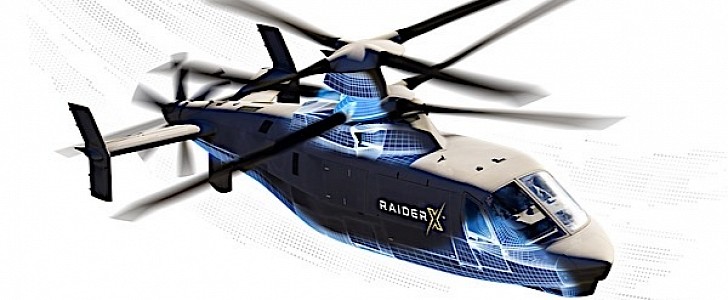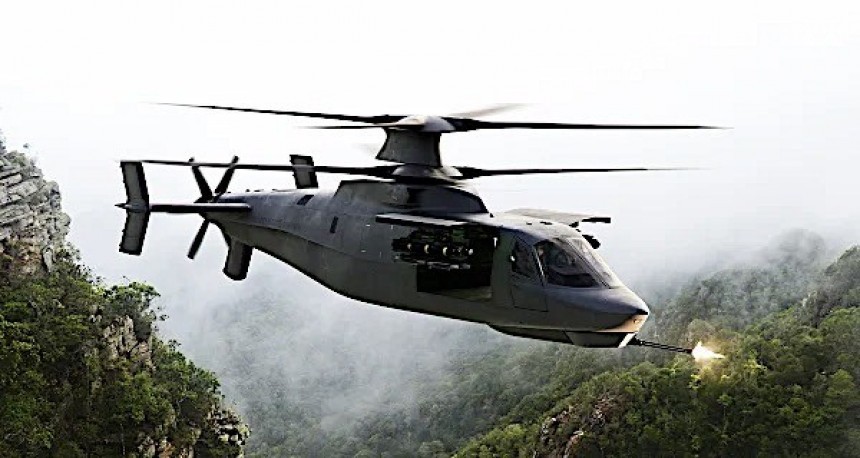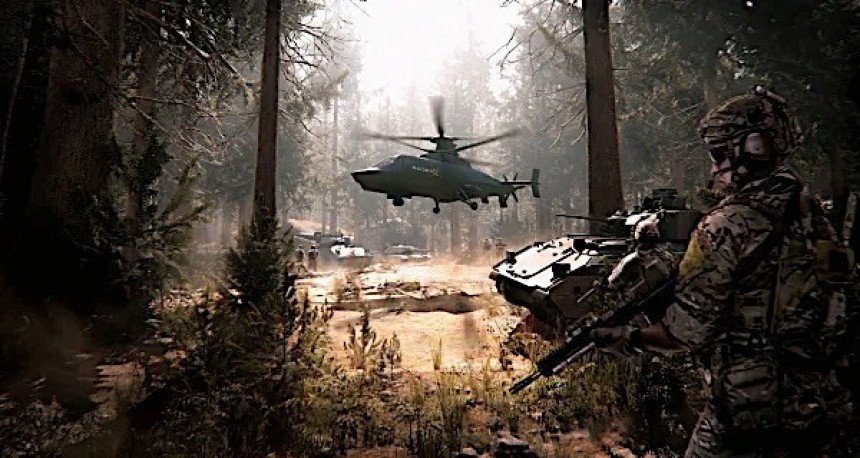Back in 2018, in an effort to come up with a more modern helicopter for its needs, a potential successor of the Bell OH-58 Kiowa, the U.S. Army launched the Future Attack Reconnaissance Aircraft (FARA) program.
The program moved quite rapidly, and in April 2019 five companies were involved: AVX Aircraft/ L3Harris Technologies, Bell Helicopter, Boeing, Karem Aircraft, and Lockheed Martin’s Sikorsky Aircraft. One year after that, the Army trimmed the list some more, and left in the competition are now Bell and Sikorsky.
Bell's entry is called 360 Invictus, and it’ll be the focus of another coverage here on autoevolution at a later time. Today, we’ll take a close look at everything we know about Sikorsky’s entry, the Raider X.
The machine is described as a compound helicopter, meaning an aircraft that uses a main propulsion system, and an auxiliary one meant to provide extra thrust, thus allowing for greater speeds and faster acceleration.
With twin, counterrotating, coaxial rigid rotors on top rotors and a pusher propeller to keep it stable at the rear, the helicopter is still a mystery as far as full specifications go. Available info point to it being powered by a General Electric (GE) turboshaft engine capable of developing up to 3,000 shaft horsepower – the unit was selected by the Army through the Improved Turbine Engine Program (ITEP), which was initiated in 2009 and concluded a decade later.
Called T901, the engine is still in development and is the same that will make it into the UH-60 Black Hawk and AH-64 Apache, as a replacement for the T700 units currently in use. In March this year, GE announced it has begun testing the T901.
Aside from the increase in power (by comparison, the T700 is capable of close to 1,800 shaft horsepower), the new engine should also provide 25 percent more fuel efficiency and lower lifecycle costs.
As said, the engine will spin three propellers, two of which will form what Sikorsky calls X2 rigid rotor. It’s the same one being tried for the SB-1 Defiant, the company’s entry, together with Boeing, in the other U.S. Army helicopter program, the Future Long-Range Assault Aircraft (FLRAA).
The X2 concept is not fully and publicly detailed, but we do know it can trace its roots all the way back to the XH-59A prototype flown back in the 1970s, but with “improvements in vibration reduction, weight reduction and blade technology.” We also know the design should enable the helicopter to “be flown by a single pilot, with a single engine.”
When used on the Raider X (which evolved from something called S-97 Raider, which was about 20 percent smaller), the system should transform it into a highly-responsive machine, capable of low-speed hover, off-axis hover, and level acceleration and braking.
As a whole, the Raider has been designed to be cheaper and easier to operate. This should be achieved by shifting from the usual way maintenance is being conducted to giving the aircraft the tools to self-monitor, and engineers the ones they need to provide condition-based maintenance.
As far as avionics and mission systems are concerned, something called Modular Open System Architecture (MOSA) will be used. This will effectively transform the platform into one that could be upgraded on a plug-and-play basis, and that for pretty much all of its most important systems: computing, sensors, survivability and weapons.
As far as military capabilities are concerned, nothing is certain or confirmed at the moment. FARA specs required a knife-fighter, meaning it should pack the biggest punch in the smallest possible package.
At the time of writing, there is no estimate as to when the helicopter should be ready for duty. FARA initially called for a flight test evaluation for 2023, and production debut in 2028, but as things usually go in the defense industry, that may change.
Bell's entry is called 360 Invictus, and it’ll be the focus of another coverage here on autoevolution at a later time. Today, we’ll take a close look at everything we know about Sikorsky’s entry, the Raider X.
The machine is described as a compound helicopter, meaning an aircraft that uses a main propulsion system, and an auxiliary one meant to provide extra thrust, thus allowing for greater speeds and faster acceleration.
With twin, counterrotating, coaxial rigid rotors on top rotors and a pusher propeller to keep it stable at the rear, the helicopter is still a mystery as far as full specifications go. Available info point to it being powered by a General Electric (GE) turboshaft engine capable of developing up to 3,000 shaft horsepower – the unit was selected by the Army through the Improved Turbine Engine Program (ITEP), which was initiated in 2009 and concluded a decade later.
Aside from the increase in power (by comparison, the T700 is capable of close to 1,800 shaft horsepower), the new engine should also provide 25 percent more fuel efficiency and lower lifecycle costs.
As said, the engine will spin three propellers, two of which will form what Sikorsky calls X2 rigid rotor. It’s the same one being tried for the SB-1 Defiant, the company’s entry, together with Boeing, in the other U.S. Army helicopter program, the Future Long-Range Assault Aircraft (FLRAA).
The X2 concept is not fully and publicly detailed, but we do know it can trace its roots all the way back to the XH-59A prototype flown back in the 1970s, but with “improvements in vibration reduction, weight reduction and blade technology.” We also know the design should enable the helicopter to “be flown by a single pilot, with a single engine.”
As a whole, the Raider has been designed to be cheaper and easier to operate. This should be achieved by shifting from the usual way maintenance is being conducted to giving the aircraft the tools to self-monitor, and engineers the ones they need to provide condition-based maintenance.
As far as avionics and mission systems are concerned, something called Modular Open System Architecture (MOSA) will be used. This will effectively transform the platform into one that could be upgraded on a plug-and-play basis, and that for pretty much all of its most important systems: computing, sensors, survivability and weapons.
As far as military capabilities are concerned, nothing is certain or confirmed at the moment. FARA specs required a knife-fighter, meaning it should pack the biggest punch in the smallest possible package.
At the time of writing, there is no estimate as to when the helicopter should be ready for duty. FARA initially called for a flight test evaluation for 2023, and production debut in 2028, but as things usually go in the defense industry, that may change.















